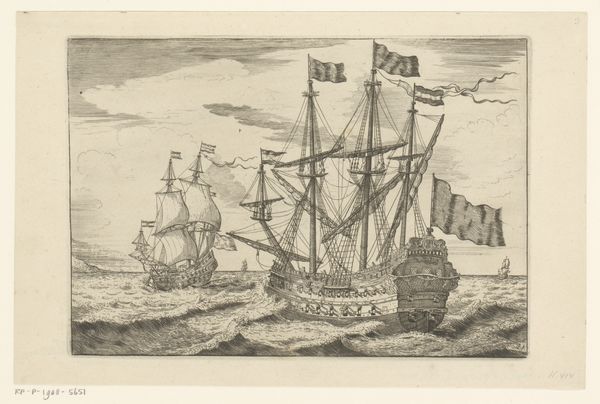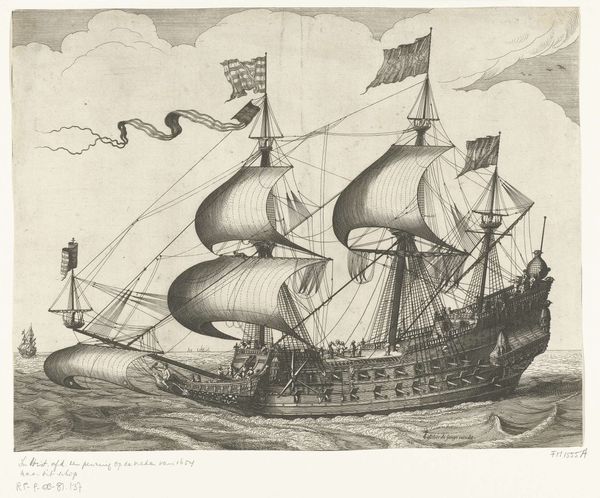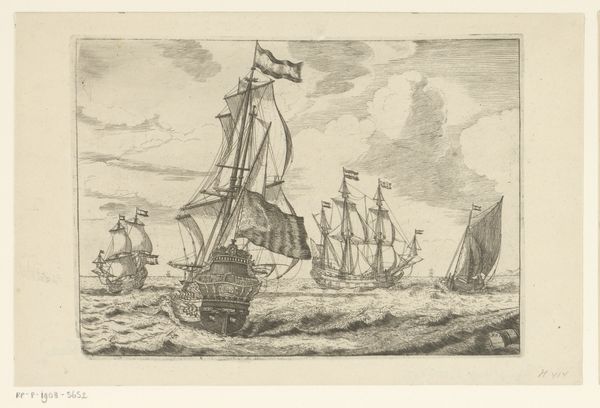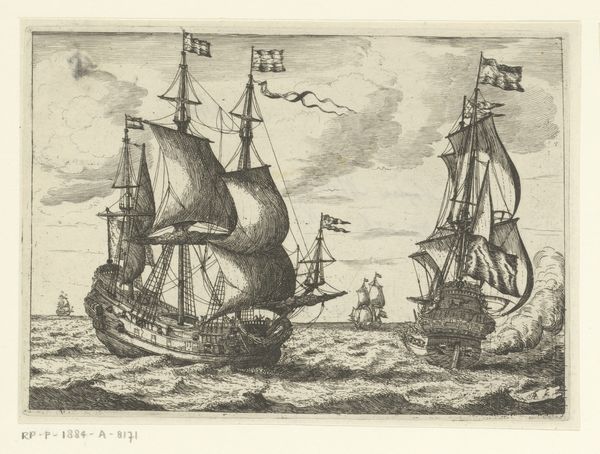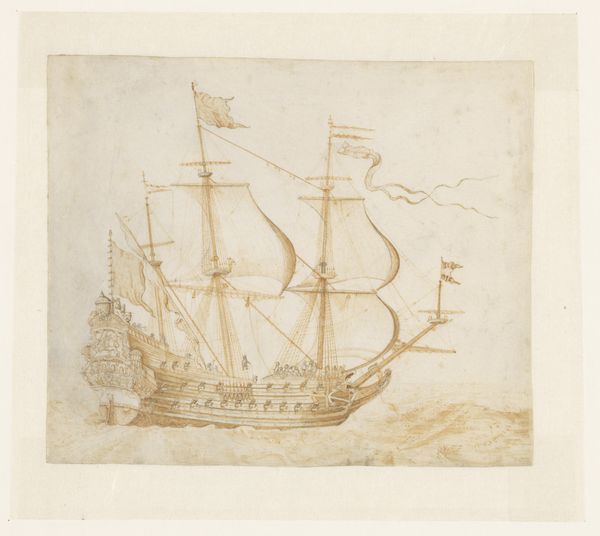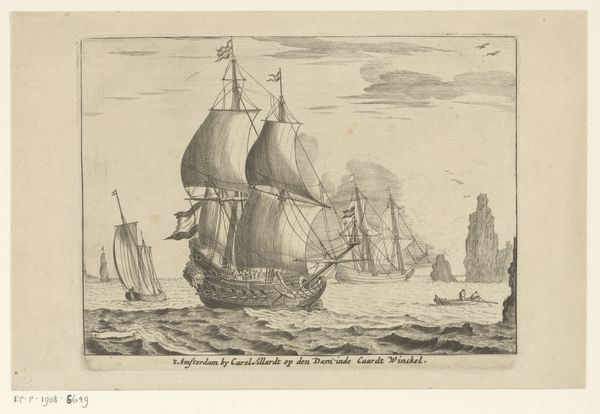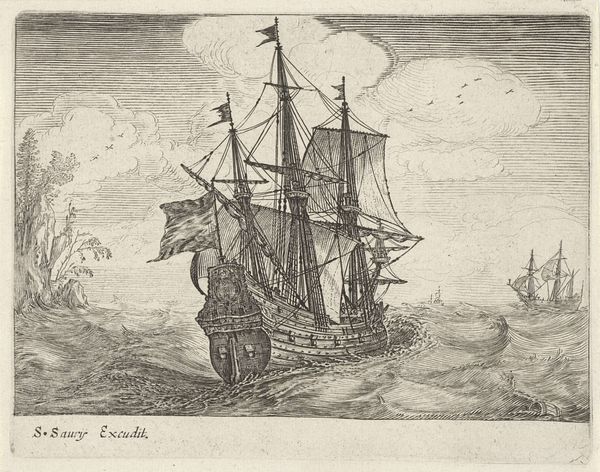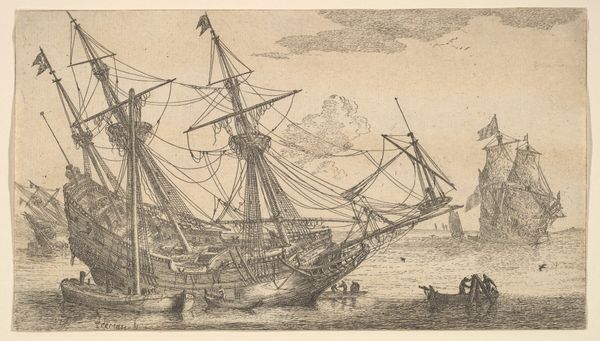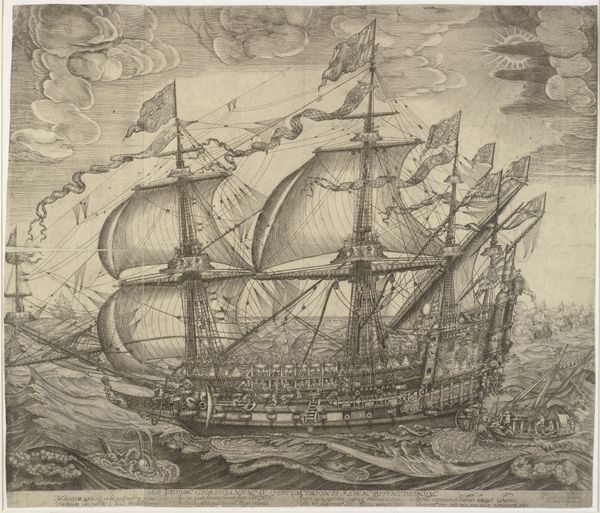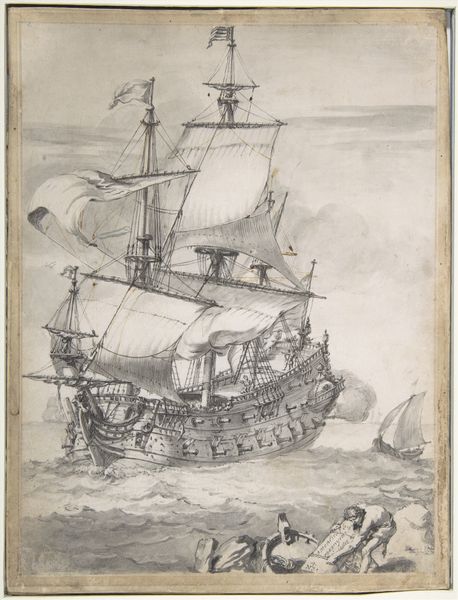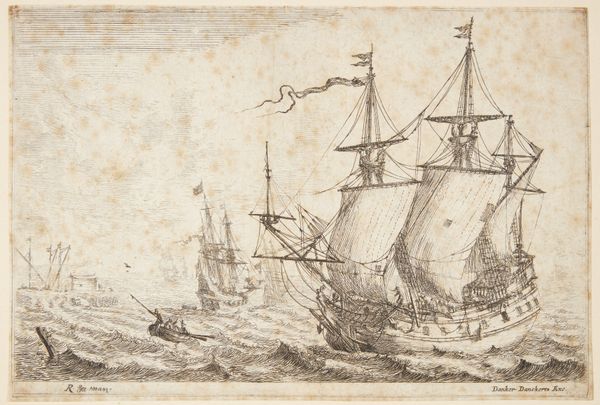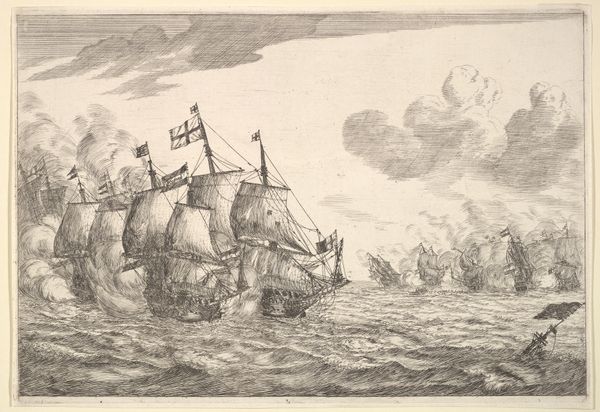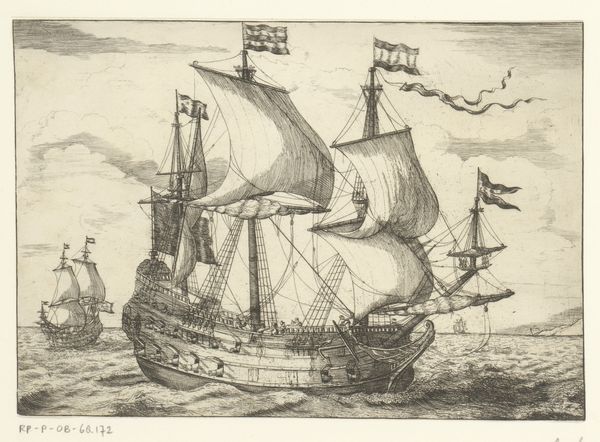
print, engraving
#
dutch-golden-age
# print
#
landscape
#
line
#
history-painting
#
engraving
#
sea
Dimensions: height 140 mm, width 195 mm
Copyright: Rijks Museum: Open Domain
Curator: Here we have a Dutch Golden Age print, “Oorlogsschepen op een woelige zee,” or “Warships on a Turbulent Sea,” created between 1673 and 1709 by the artist Monogrammist ABK, housed here at the Rijksmuseum. Editor: My immediate impression is one of drama. The waves look quite agitated, almost angry, and the warships appear to be caught in a rather precarious dance with the sea. Curator: Indeed, the turbulent sea is not merely a backdrop, but almost an active participant. This work comes at a time when the Dutch Republic was deeply involved in maritime power struggles. Depictions of ships weren't just about naval prowess; they signified national identity and mercantile strength. The engraving itself, being a readily reproducible medium, allowed for widespread dissemination of this message. Editor: Absolutely. And the choice of imagery is deliberate. The ships aren't just any ships; they are warships. War, historically, is laden with symbols. The flags, the sheer scale of these vessels, the cannon ports...it speaks of dominance, control, and perhaps even a warning to potential rivals. Curator: Precisely! The artist plays with light and shadow to accentuate the dramatic effect, and line engraving allowed for precise detail, showcasing the grandeur and technological advancement of these seafaring machines. This wasn’t only an artistic exercise, but a political one as well, reminding the viewer, and perhaps other nations, of the Republic’s strength. Editor: And there’s something about the slightly raised stern of the main vessel—almost tauntingly positioned higher than the choppy waves, and heavily decorated—that communicates both triumph and perhaps even a little hubris. I wonder how audiences then perceived the subtle undercurrents of meaning present in these vessels at sea? Curator: An excellent question. Perhaps now, observing this print in the context of the Rijksmuseum, we can better appreciate not only the technical skill involved, but also its vital role in shaping and projecting a particular image of Dutch power during a complex and often volatile period. Editor: I agree, thinking about it as both an aesthetic and a symbolic document really deepens its impact, revealing multiple layers beneath the surface.
Comments
No comments
Be the first to comment and join the conversation on the ultimate creative platform.
